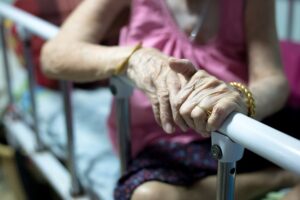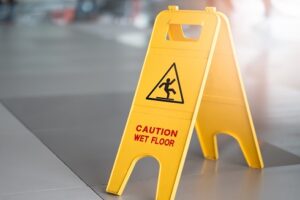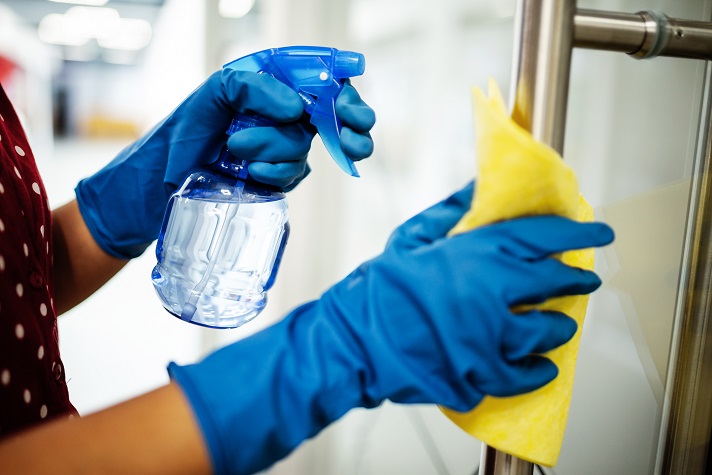All providers of care are aware that their primary role is to keep people safe. In fact, safety is one of the CQC’s fundamental standards: https://www.cqc.org.uk/about-us/fundamental-standards.
Many of the people cared for in social care settings are by the very nature of the fact they need care less able than the general public to take care of their own safety requirements. Inability to provide for one’s own safety in care settings might arise out of:

- A physical disability
- A mental health issue
- A learning disability
- A sensory impairment
- Any combination of the above
As we saw in the pandemic, there are other risks which arise within social care settings where people live together, for example residential and nursing homes. The sorts of safety issues arising here include:
- The increased potential for transmission of infections, e.g., COVID-19, diarrhoeal illnesses, seasonal flu.
- The risks of being around other people who may not have capacity.
- Reliance on equipment.
- Reliance on others for care.
- Reliance on others for medication.
The list of risks, which might constitute a safety issue is seemingly endless.
The new CQC quality statements, https://www.cqc.org.uk/about-us/how-we-will-regulate/five-key-questions-and-quality-statements, which are set to replace KLoEs, identify various elements of practice in which care providers will need to demonstrate that the care they give is safe. Commitment to these is demonstrated in the adoption of the quality statements:
- Learning culture
We have a proactive and positive culture of safety based on openness and honesty, in which concerns about safety are listened to, safety events are investigated and reported thoroughly, and lessons are learned to continually identify and embed good practices. - Safe systems, pathways and transitions
We work with people and our partners to establish and maintain safe systems of care, in which safety is managed, monitored and assured. We ensure continuity of care, including when people move between different services. - Safeguarding
We work with people to understand what being safe means to them as well as with our partners on the best way to achieve this. We concentrate on improving people’s lives while protecting their right to live in safety, free from bullying, harassment, abuse, discrimination, avoidable harm and neglect. We make sure we share concerns quickly and appropriately. - Involving people to manage risks
We work with people to understand and manage risks by thinking holistically so that care meets their needs in a way that is safe and supportive and enables them to do the things that matter to them. - Safe environments
We detect and control potential risks in the care environment. We make sure that the equipment, facilities and technology support the delivery of safe care. - Safe and effective staffing
We make sure there are enough qualified, skilled and experienced people, who receive effective support, supervision and development. They work together effectively to provide safe care that meets people’s individual needs.
individual needs. - Infection prevention and control
We assess and manage the risk of infection. We detect and control the risk of it spreading and share any concerns with appropriate agencies promptly. - Medicines optimisation
We make sure that medicines and treatments are safe and meet people’s needs, capacities and preferences by enabling them to be involved in planning, including wh en changes happen.
en changes happen.
These statements of intent identify what safe is really about, that is creating a culture where staff are trained and aware of what it means to provide safe care, but where they are not afraid of taking calculated and managed risks with service users in order to enable them to do the things that matter to them.
Safety is often one of the areas which care providers get wrong, they see safe as meaning that they need to keep people away from all forms of harm and potential harm, when what it really means is avoidable, or unnecessary harm.
While safety is undoubtedly important, it cannot be at the cost of personal freedoms, and choices. The fundamental standard states:
So, people in care can expect to be kept safe from needless harm, like that arising from poorly trained staff or badly maintained equipment, but not from harm which might arise in the course of everyday life and life choices, like catching a cold from a relative on a day out of the service or accidentally falling over a step on the way to the pub to see a friend. CAREis can help you record how you keep people safe in both their care and support plans and audits, https://www.careis.net/features/.
So, while it is true to say that an ounce of prevention is worth a pound of cure, care providers need to adopt the motto that there are times when one should take risks in order to achieve quality.
